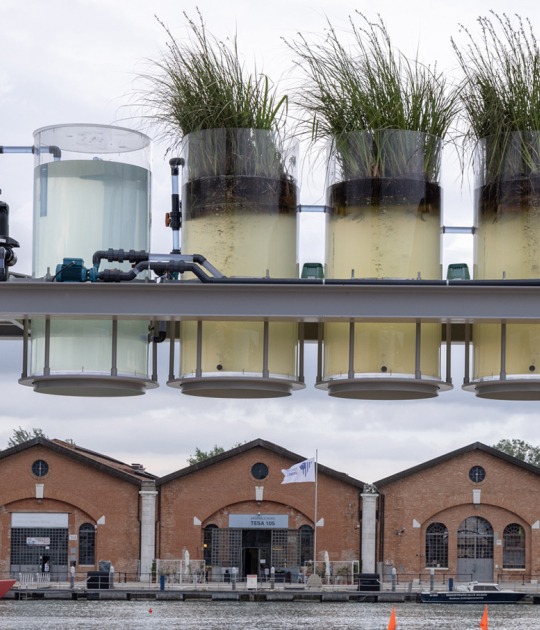Christo creates a short 3 kilometers long on Lake Iseo. This is a large area of yellow fabric with undulating wave motion, it is carried by a modular system cubes floating dock with HDPE.
Description of the project by Christo
For 16 days in June 2016, Italy’s Lake Iseo will be reimagined. 70,000 square meters of shimmering yellow fabric, carried by a modular floating dock system of 200,000 high-density polyethylene cubes, will undulate with the movement of the waves as The Floating Piers rise just above the surface of the water.
Visitors will experience this work of art by walking on it from Sulzano to Monte Isola and to the island of San Paolo, which it encircles. The mountains surrounding the lake will offer a bird’s-eye view of The Floating Piers, exposing unnoticed angles and altering perspectives.
A 3-kilometer-long walkway will be created as The Floating Piers extend across the water of Lake Iseo. The piers will be 16 meters wide and approximately 50 centimeters high with sloping sides. The fabric will continue along 1.5 kilometers of pedestrian streets in Sulzano and Peschiera Maraglio.
In the spring and summer of 2014, Christo, Vladimir Yavachev – Operations Manager, Wolfgang Volz – Project Manager, and Josy Kraft – Registrar/Curator, scouted the lakes of Northern Italy. Along with Project Director Germano Celant, they found Lake Iseo to be the most inspiring location. Lake Iseo is located 100 kilometers east of Milan and 200 kilometers west of Venice.
The Floating Piers will be Christo’s first large scale project since Christo and Jeanne-Claude realized The Gates in 2005. As with all of Christo and Jeanne-Claude’s projects, The Floating Piers will be funded entirely through the sale of Christo’s original works of art. After the 16-day exhibition, all components will be removed and industrially recycled.
Christo and Jeanne-Claude have a long history of creating projects in Italy: Wrapped Fountain and Wrapped Medieval Tower in Spoleto, 1968; Wrapped Monuments in Milan, 1970; and The Wall – Wrapped Roman Wall in Rome, 1973–74.
After over 40 years Christo is excited to be working in Italy again.






















![Friedrich Kiesler, Endless House for Mary Sisler [shattered sketch sheet], New York and Florida, 1961, 21.5 x 33.4 cm, pencil on paper, mounted on cardboard. Courtesy by the Austrian Frederick and Lillian Kiesler Private Foundation, Vienna Friedrich Kiesler, Endless House for Mary Sisler [shattered sketch sheet], New York and Florida, 1961, 21.5 x 33.4 cm, pencil on paper, mounted on cardboard. Courtesy by the Austrian Frederick and Lillian Kiesler Private Foundation, Vienna](/sites/default/files/styles/mopis_home_news_category_slider_desktop/public/2025-05/metalocus_Fundacio%CC%81n-Frederick-Kiesler_03_p.jpg?h=3b4e7bc7&itok=kogQISVW)













